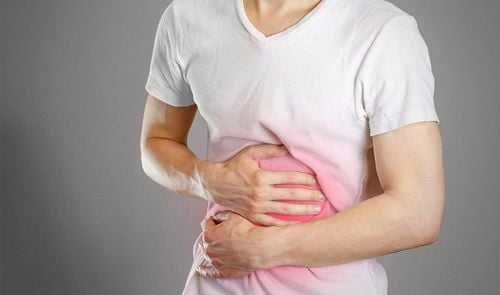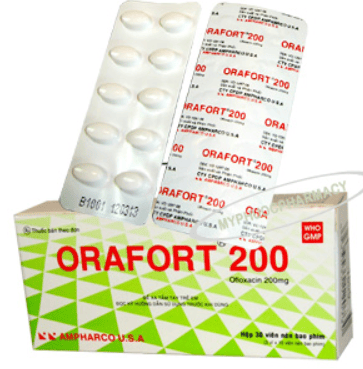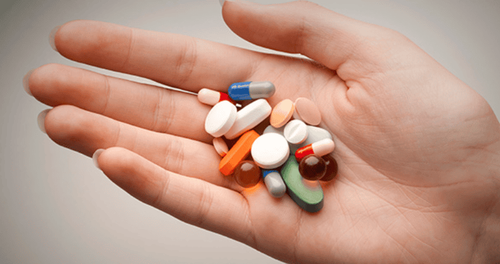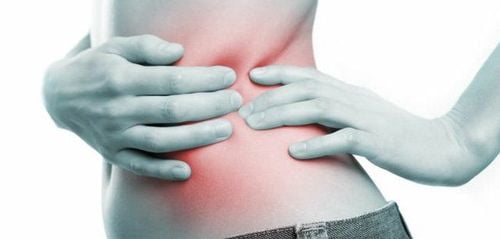This is an automatically translated article.
The article is professionally consulted by Master, Doctor Tran Thi Vuong - Laboratory Department - Vinmec Hai Phong International General Hospital.
Urinary tract infection is a fairly common disease in humans. Is the phenomenon of bacteria entering the urinary system of a person causing the body's response to fight the invasion of bacteria. Tests needed to diagnose urinary tract infection such as urinalysis, urinalysis, blood culture, imaging,...
1. Urinary tract infections
A urinary tract infection is an infection that affects part of the urinary tract. When the lower urinary tract is affected, it is considered a bladder infection, when the upper urinary tract is affected, it is called a kidney infection.The most common cause of urinary tract infections is Escherichia coli bacteria. Risk factors include: Female, sexually active, diabetes, obesity and family history. Although sex is a risk factor, UTIs are not part of the group of sexually transmitted diseases.
Bacteria enter the urinary tract in 4 ways:
Bacteria cause urinary tract infections upstream. Urinary tract infections. Lymphatic urinary tract infection. Bacteria spread from nearby organs. In women, urinary tract infections are mainly by retrograde mechanism because the urethra is short, bacteria will easily enter the bladder through intercourse. On the other hand, bacteria can enter the bladder and ureters and then to the kidneys through the reflux of urine from the bladder into the ureter. Urinary tract interventions such as cystoscopy, cystoscopy, and retrograde ureteroscopy increase the risk of urinary tract infections.
Kidney infections occur due to many Gram-positive species such as: S.aureus, Streptococcus ... These bacteria often cause urinary tract infections by blood. Gram-negative bacteria rarely occur this route.
Diseases that increase pressure in the bladder cause the flow of lymph to flow directly into the kidney to help bacteria enter the kidney.
Upstream infection is the most common route in urinary tract infections.
Infection due to infection from nearby organs: seen in patients with intra-abdominal infections, genital infections, gastrointestinal fistulas, and bladder-vaginal fistulas.
Symptoms of UTI:
For young children: Fever, crying a lot, crying or grimacing when urinating, loss of appetite,, For adults: When you have an upper UTI, you will see back pain, hematuria , cloudy urine, difficulty urinating, painful urination, fever, frequent urination, painful intercourse, feeling tired all over. Lower urinary tract infection patients feel chills, high fever, nausea, pain in the lower abdomen, ...

2. Diagnostic tests for urinary tract infections
2.1 Method of specimen collection Midstream urine collection: Specimens are collected in the morning by midstream urine collection method.For male patients: Clean genitals, urinate, remove the first drops of urine, then urinate into a sterile test tube about 10ml of urine. For female patients: For the patient to clean the genitals, pull the labia majora to expose the urethral opening, urinate, remove the first drops, collect about 10 ml of urine into a wide-mouth sterile cup. Catheter collection of urine: Placement of a catheter through the urethra, this method needs to be sterile to reduce the risk of contamination, but it is easy to cause infection upstream.
Pubic aspiration: As a method that can ensure sterility, the method of pubic aspiration is especially good for culturing anaerobic bacteria. But complicated techniques should be rarely done, but only applied to children or adults with urinary retention.
2.2 Factors affecting test results Urine quantity: Must collect at least 10 ml for observation and culture, 20ml of urine to identify fungi and Mycobacteria.
Time of testing : After collecting urine, it must be done within an hour, and not more than 4 hours. If refrigerated, do not exceed 18 hours.
Menstrual period
Taking medicine eg diuretics, erythromycin, trimethoprim, or high dose vitamin C, tetracycline,...
X-rays with contrast dye within 3 days
To get tested Exactly, you should fast for 6-8 hours before doing the urine test. Due to the nutrients contained in the food may change some of the parameters of the urine. It is advisable to collect urine in the morning when you wake up so that the food can be fully digested during the night.
2.3 Diagnostic Tests The urine test strip can be a screening test, which can detect the presence of proteins, white blood cells, red blood cells, and a number of other biochemical indicators that are directional.
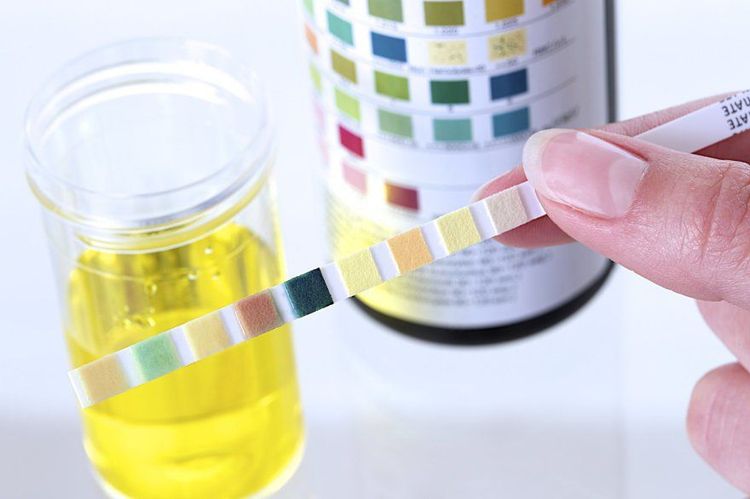
For male patients: Clean genitals, urinate, remove the first drops of urine, then urinate into a sterile test tube about 10ml of urine. For female patients: For the patient to clean the genitals, pull the labia majora to expose the urethral opening, urinate, remove the first drops, collect about 10 ml of urine into a wide-mouth sterile cup. Catheter collection of urine: Placement of a catheter through the urethra, this method needs to be sterile to reduce the risk of contamination, but it is easy to cause infection upstream.
Pubic aspiration: As a method that can ensure sterility, the method of pubic aspiration is especially good for culturing anaerobic bacteria. But complicated techniques should be rarely done, but only applied to children or adults with urinary retention.
2.2 Factors affecting test results Urine quantity: Must collect at least 10 ml for observation and culture, 20ml of urine to identify fungi and Mycobacteria.
Time of testing : After collecting urine, it must be done within an hour, and not more than 4 hours. If refrigerated, do not exceed 18 hours.
Menstrual period
Taking medicine eg diuretics, erythromycin, trimethoprim, or high dose vitamin C, tetracycline,...
X-rays with contrast dye within 3 days
To get tested Exactly, you should fast for 6-8 hours before doing the urine test. Due to the nutrients contained in the food may change some of the parameters of the urine. It is advisable to collect urine in the morning when you wake up so that the food can be fully digested during the night.
2.3 Diagnostic Tests The urine test strip can be a screening test, which can detect the presence of proteins, white blood cells, red blood cells, and a number of other biochemical indicators that are directional.
2.3.1 Urinalysis: Biochemistry, cytology Two features include:
Urine is a readily available and easy-to-collect specimen. Urine contains a lot of information about the body's major metabolic functions, including bacteria, fungi, parasites, etc. When a urinary tract infection is present, the urine will contain bacteria. or yeast or parasite cells. The urine color will then be cloudy. Find bacteria, yeasts, parasites by microscopic analysis.
Detecting Bacterial metabolic products in urine Like nitrite: detectable when bacteria count >104-105.Urine analysis, leukocyte esterase detection, nitrite detection can be applied well in cases where urine culture is not available.
Tests for UTIs
Leukocytes : The number of white blood cells in the urine in a normal healthy adult is between 10-25 Leu/UL. If the white blood cell count is increased and accompanied by painful urination, frequent urination may be due to a fungal or bacterial infection that causes a urinary tract infection, a bladder infection. Nitrite : In normal urine, nitrite is absent, or present at very low levels. The index of nitrite in urine at the legal level is 0.05-0.1 mg/dL. Nitrite is formed when bacteria convert it to nitrate. The presence of nitrite in the urine means that bacteria are attacking the body, especially the bacteria that cause urinary tract infections. In which the most common type is E.coli infection. You can check for nitrites in the urine by using test strips. If the nitrite test strip is pink or pale pink, it means that there are nitrites and bacteria in the urine. Protein : The protein index within the allowable level in urine is trace (it's okay); 7.5-20mg/dL or 0.075-0.2 g/L. For an accurate protein test, it is necessary to use urine in the morning, the first time you urinate after waking up. Through the urine protein index, it is possible to detect kidney diseases, blood in the urine or urine infection. 2.3.2 Direct endoscopic staining technique Before culture, the specimens are directly stained by urine non-centrifugation test method. The urine tube was shaken well, using a sterile Pasteur pipette to collect one drop of urine (0.05ml) onto a clean slide. You can put 3-4 drops on a slide in 3-4 positions, don't let the drops of urine mix together, don't spread the urine droplets to widen. Allow to dry naturally, fix the slide with heat and then stain with Gram.
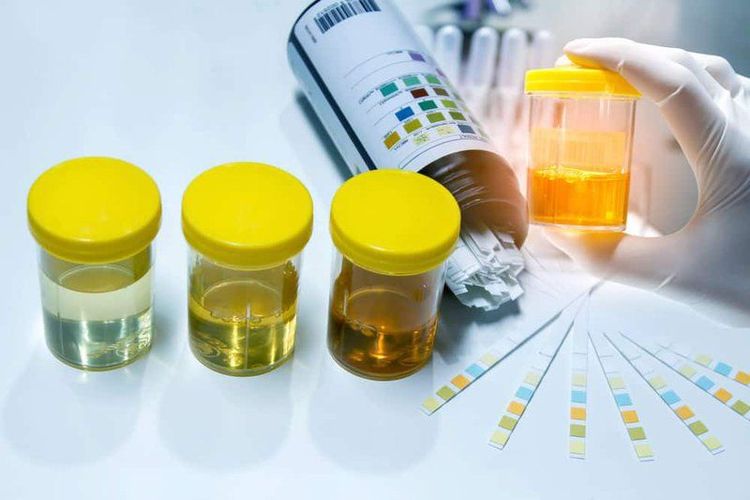
About leukocytes:
If there are no white blood cells (BC) on the specimen on the microsphere, it is possible that there is no infection.
If there are > 10 BC/ school, there is definitely a UTI.
About bacteriuria:
If there are more than 10 bacteria/microorganism, it is concluded that UTI is present (the number of bacteria is >105 bacteria/ml). This is the most important criterion of Gram staining method to diagnose UTI. If there are no white blood cells and no bacteria, no urine culture is possible. If there are more than 2 types of bacterial forms in the urine, it is necessary to take a urine sample again to confirm 2.3.3 Urine bacteriological culture test The most important test, bringing decisive diagnostic value bacteria that cause urinary tract infections. Usually use loope 0.01ml, and 0.001ml.
Two important issues to watch out for when culturing are: the presence of bacteria in the glans and urethra which results in low bacterial counts in the urine. Urinary tract infections deep in the body (pyelonephritis, ureters) may not show bacteria in the urine because of an obstruction.
Evaluation of results:
If the number of bacteria is ≥ 105, it is concluded that it is a urinary tract infection.
If the bacterial count 103 - 105 suspects UTI, it should be combined with clinical, direct testing to see the urine leukocyte count. If > 1 BC/ 1 microbiological field is present, then the bacteria should be identified and the antibiotic profile should be performed.
If the number of bacteria < 103 conclude no UTI.
If more than two species of bacteria are present, possibly due to contamination during sampling, the specimen should be retaken and tested for a second time.
2.3.4 Imaging Diagnostic imaging includes ultrasound, imaging X-ray to detect congenital malformations of the urinary tract.
In summary, UTI can lead to complications such as pyelonephritis, perirenal abscess, sepsis, acute renal failure. In children, kidney infection can quickly lead to chronic kidney failure. In pregnant women, urinary tract infections can cause premature delivery, miscarriage, or neonatal infection. Therefore, when you see abnormal signs such as frequent urination, painful urination, difficulty urinating even though you want to urinate, cloudy urine even fever, blood in urine, etc., you need to go to a medical facility immediately for treatment. Do tests to diagnose UTIs early and get treatment promptly.
Vinmec International General Hospital is one of the hospitals that not only ensures professional quality with a team of leading medical doctors, modern equipment and technology, but also stands out for its examination and consultation services. comprehensive and professional medical consultation and treatment; civilized, polite, safe and sterile medical examination and treatment space. Customers when choosing to perform tests here can be completely assured of the accuracy of test results.
Master. Doctor. After graduating as a general practitioner, Tran Thi Vuong spent 2 years training in microbiology in Japan. With 9 years of teaching experience at Hai Phong University of Medicine and Pharmacy, participating in many domestic and foreign scientific research projects, continuous training in Laboratory Biosafety and Laboratory Quality Assurance at the National Hospital for Tropical Diseases, has experience in diagnostic testing for bacterial and viral infections. Currently, he is a doctor at the Laboratory Department of Vinmec Hai Phong International General Hospital.
Please dial HOTLINE for more information or register for an appointment HERE. Download MyVinmec app to make appointments faster and to manage your bookings easily.





